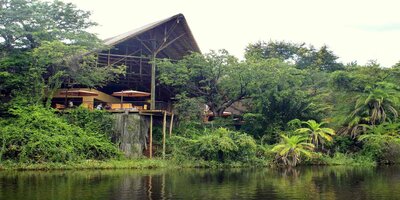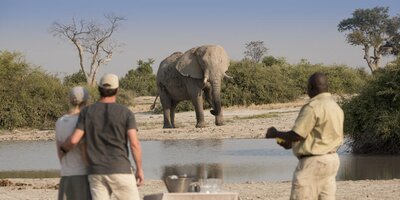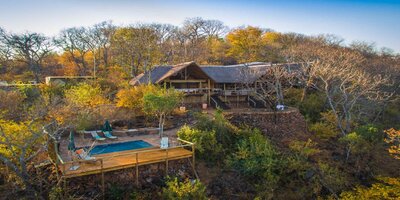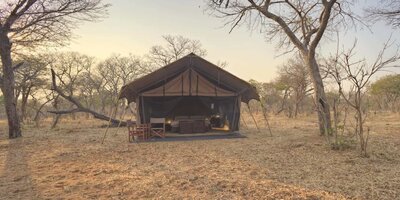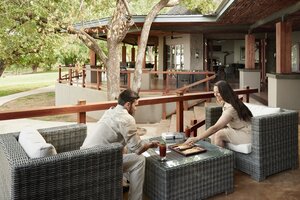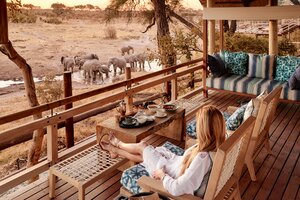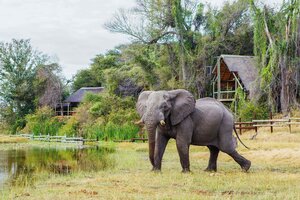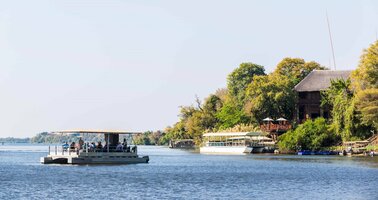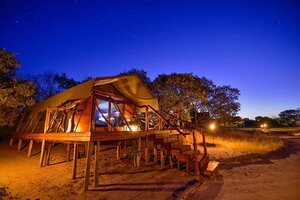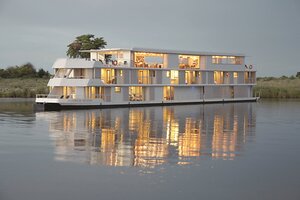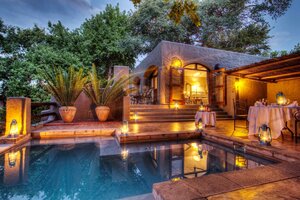Overview
Chobe National Park is in northern Botswana near the vast, inland Okavango Delta. Directly to the east is Kazungula, near the confluence of the Chobe and Zambezi rivers, where Botswana, Namibia, Zambia, and Zimbabwe meet. Chobe National Park is often termed as the Elephant capital of Africa due to its high population of elephants. Chobe has the greatest concentration of game in all of Africa (about 80 000), both in variety and in sheer numbers. Elephant and buffalo are a permanent presence on the riverbanks in the dry winter months. Burchell's zebra are very common, while smaller numbers of sable, roan and greater kudu can be found in the park interior. Lions are often seen, as well as other predators that include wild dog, leopard, and cheetah. The flood plains of the Chobe River is the only place in Botswana where the puku antelope can be seen.Why Go:
- Superb wildlife viewing
- Day and night game drives
- Exceptional service and hospitality
- Off-road driving allows close-up animal sightings
Wildlife
Chobe offers great wildlife viewing. The park is renowned for huge concentrations of elephant and buffalo that come to drink at the river. Lions often lie in ambush near the river waiting for an opportunity, but spotted hyena, leopard and cheetah are more easily seen inside the park.
More About the WildlifeScenery
Chobe’s lifeline is the Chobe River which lazily meanders through savannah and woodland, and the floodplains are usually dotted with animals. The interior is a patchwork of mopane woodland and flat Kalahari sandveld (dry, sandy soil). The Savuti Marsh is another landmark in the park. It is mostly dry, and it is often compared to the Serengeti Plains.
Best Time to Visit
You can see animals year-round at Chobe, but the Dry season (April to October) is when wildlife viewing is at its best here, particularly along the southern bank of the park’s broad, namesake river. You’ll also see some unforgettable sunsets across the water at this time, though you’ll be elbowing the high-season crowds while checking them out.
More About the Best Time to VisitWeather & Climate
Average daytime temperatures in the Dry season (April to October) start at 30°C/86°F in April, and by October they’ve climbed to a very hot 35°C/95°F. Conditions stay fairly hot in the first two months of the Wet season (November to March), before the heavy storms of January and February sweep away the worst of the heat.
More About the Weather and ClimateWildlife & Animals
Thousands of animals on the floodplains kick up a lot of dust, which creates amazing photo opportunities at sunset. Less obvious are some of the smaller mammals such as the Chobe subspecies of bushbuck. Red lechwe are common in marshy areas. Some of the small predators include Selous' mongoose, serval and wild cat. Chobe has very seasonal wildlife viewing. The dry months, from May to October, are a good time to visit the Chobe River area in the north. During the Wet season, from December to April, animals tend to congregate around the pans in the interior.-

Buffalo
Common -

Cheetah
Occasional -

Elephant
Common -

Giraffe
Common -

Hippo
Common -

Hyena
Common -

Leopard
Occasional -

Lion
Common -

Wild Dog
Rare -

Wildebeest
Occasional -

Zebra
Common -

Black Rhino
Rare -

White Rhino
Rare
Best time for wildlife viewing
Chobe has very seasonal wildlife viewing. The dry months, from May to October, are a good time to visit the Chobe River area in the north. During the Wet season, from December to April, animals tend to congregate around the pans in the interior.Best Time to Visit
-
Best Time
August to October (Best wildlife viewing at the riverfront area)
-
High Season
July to October (The park gets crowded)
-
Low Season
November to June (Low season rates may apply)
-
Best Weather
May to August (Less hot during the day)
-
Worst Weather
October (It gets extremely hot)
April to October
- Dry Season- Wildlife viewing along the riverfront gets better as the Dry season progresses
- Most of the Dry season has the best weather
- Sunsets on the river are phenomenal
November to March
- Wet Season- There are huge concentrations of zebra and other wildlife at the Savute Marsh
- Prolific numbers of baby animals attract predators
- The best time for birders as migrants are present

